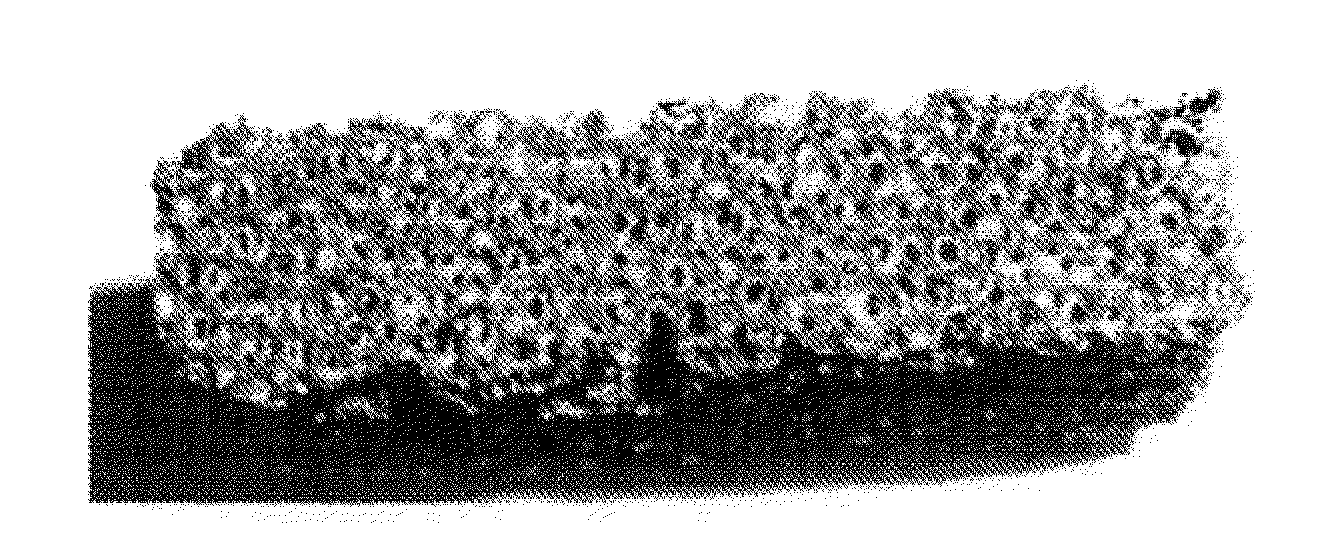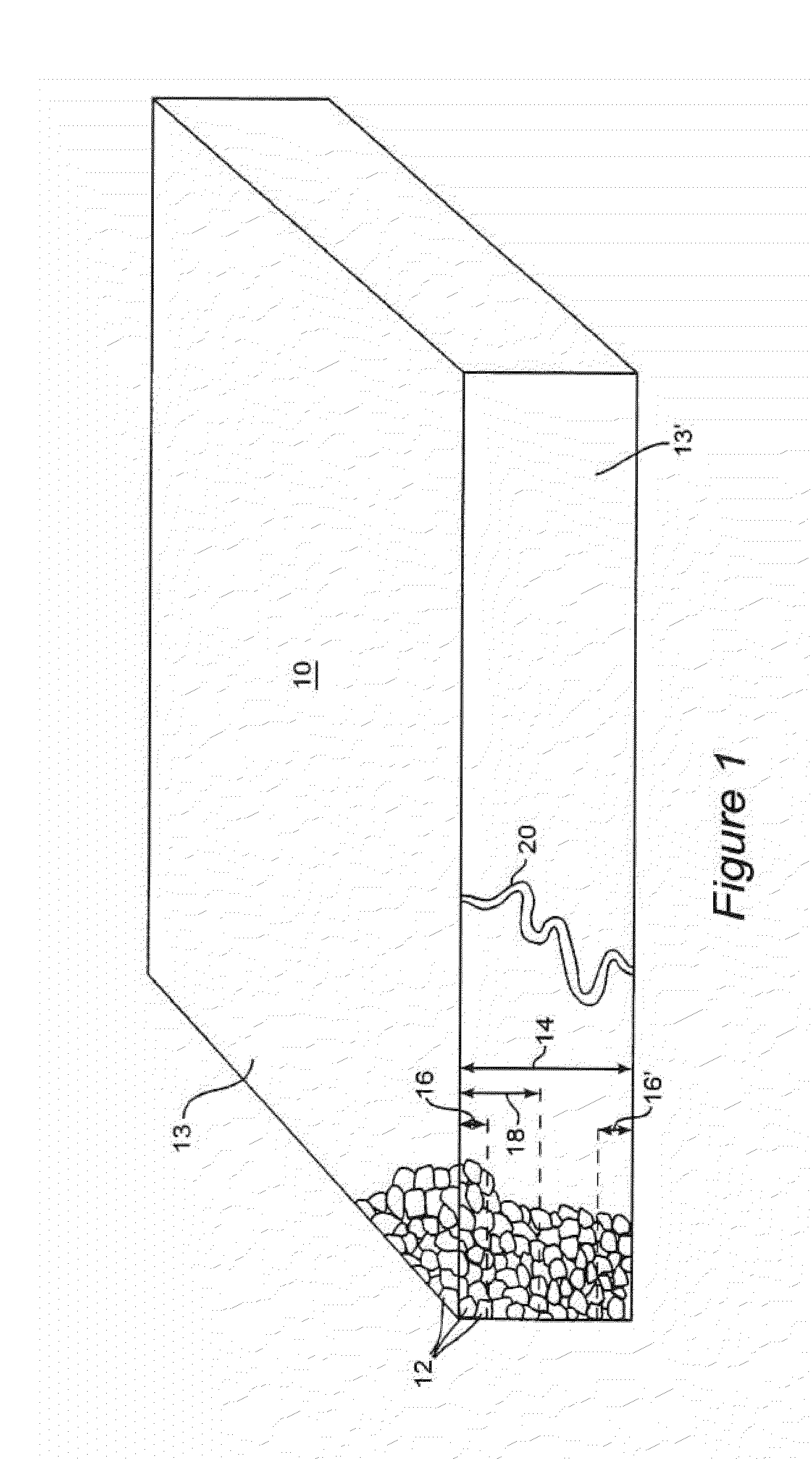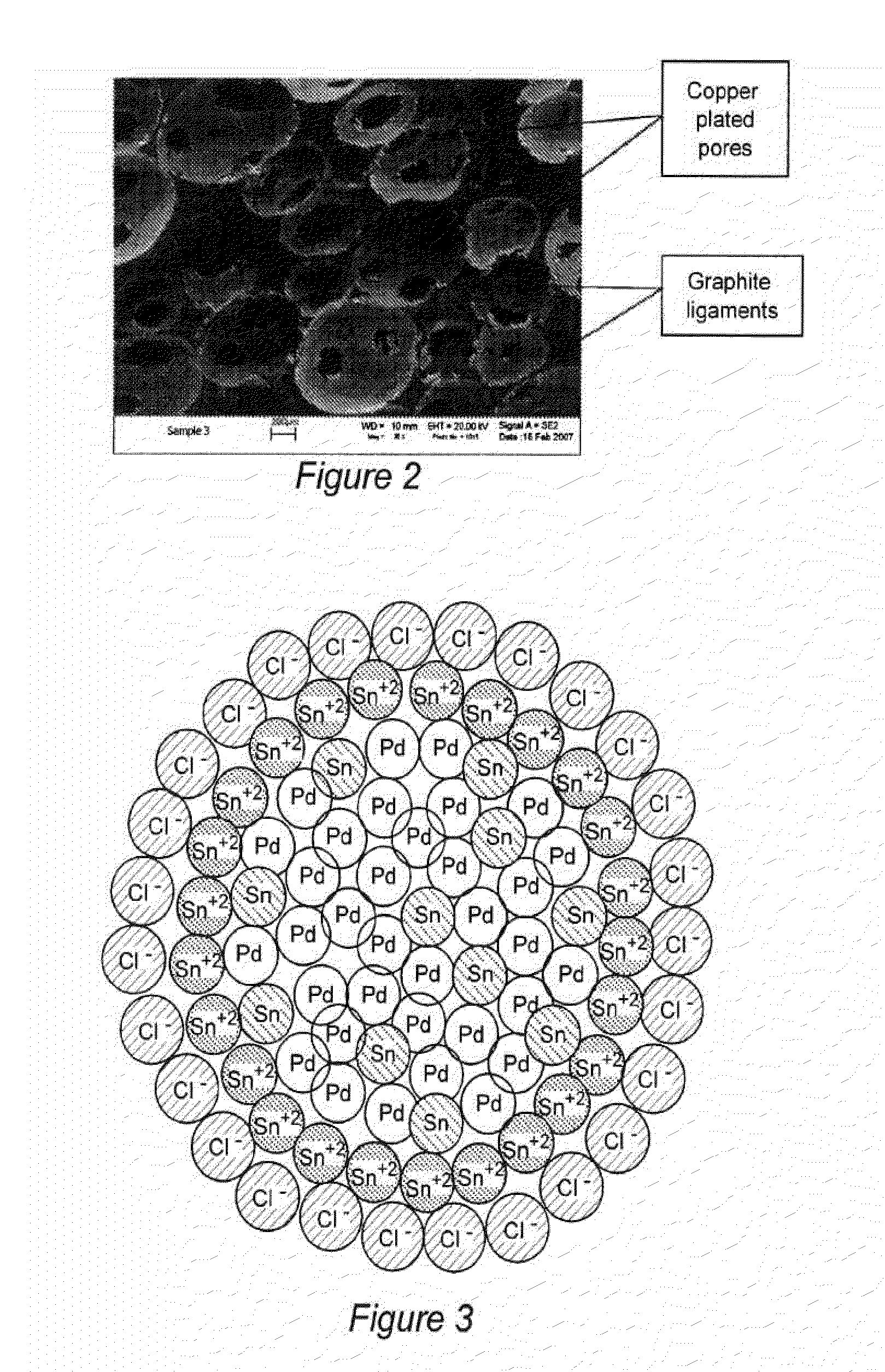Open pore ceramic matrix coated with metal or metal alloys and methods of making same
a ceramic matrix and open-pore technology, applied in the field of materials, can solve the problems of devices and systems that have not been realized, and the inability to coat the pores inside the foam, and achieve the effects of reducing surface tension, reducing pressure drop of air flow, and producing more laminar flow
- Summary
- Abstract
- Description
- Claims
- Application Information
AI Technical Summary
Benefits of technology
Problems solved by technology
Method used
Image
Examples
example 1
[0047]Most traditional methods used to coat carbon foams with metal have only been successful in coating only the most exposed outer surfaces of the material with nearly no penetration through the thickness. This invention will significantly improve the properties and performance of the foams in numerous applications as the properties of the deposited material are lent to the foam. Benefits from the improvement of this product can include increased strength, solderability, durability, toughness, corrosion resistance, thermal and electrical conductivity, catalytic behavior, etc. FIG. 4 shows a cross-sectional view of a copper coating throughout the thickness of a graphite foam.
[0048]Plating temperature can also greatly affect the film properties. Plating is typically done between 25 and 70° C. when plating copper. In general a fine-grained structure is produced at low temperatures, while as temperature is increased the grain structure becomes coarser and hydrogen adsorption is decrea...
example 2
[0066]The following steps outline an exemplary procedure for electrolessly plating graphite foam with nickel (it being understood that the order of steps could be changed and that some of the steps could simply be eliminated).[0067]1. Thoroughly clean the sample[0068]Blow the foam with compressed air to free trapped particles[0069]Ultrasonically clean in an isopropyl alcohol bath[0070]2. Prepare the bath solutions as seen in Tables 6 and 7*[0071]3. Place foam in a preparation bath with a surfactant and water[0072]Surfactants may include: dish soap, an alcohol, etc.[0073]Use a syringe to push out the trapped air within the pores[0074]When the foam sinks, enough water has saturated the material[0075]4. Place the foam in each of the baths as seen in Tables 6 and 7 and thoroughly rinse the sample with DI water between each solution[0076]Use a surfactant in each of the baths to reduce the surface tension of the fluids[0077]Continuously pump a syringe directly above the foam through each ...
example 3
[0079]The invention allows virtually any foam, and particularly open pore ceramic foams to be plated with metal and metal alloys, without plugging the surface of the foam, and in a way that allows the resulting foam-metal product to benefit from the attributes of both the foam matrix and the metal plating. A metallic coating would improve the solderability of the foams without closing the porosity, allowing air or fluids to continue to flow through the material. The products produced according to the above-described processes can be used in a number of different applications. Below is a non-exhaustive, exemplary listing of certain applications.
[0080]Thermal and Electrical Management
[0081]Several existing technologies to aid in the dissipation of heat exist, but none offer the surface area of foams without further machining. In heat dissipation applications materials must have high thermal conductivities, be able to withstand high temperatures, have a low coefficient of thermal expan...
PUM
| Property | Measurement | Unit |
|---|---|---|
| Fraction | aaaaa | aaaaa |
| Thickness | aaaaa | aaaaa |
| Thickness | aaaaa | aaaaa |
Abstract
Description
Claims
Application Information
 Login to View More
Login to View More - R&D
- Intellectual Property
- Life Sciences
- Materials
- Tech Scout
- Unparalleled Data Quality
- Higher Quality Content
- 60% Fewer Hallucinations
Browse by: Latest US Patents, China's latest patents, Technical Efficacy Thesaurus, Application Domain, Technology Topic, Popular Technical Reports.
© 2025 PatSnap. All rights reserved.Legal|Privacy policy|Modern Slavery Act Transparency Statement|Sitemap|About US| Contact US: help@patsnap.com



